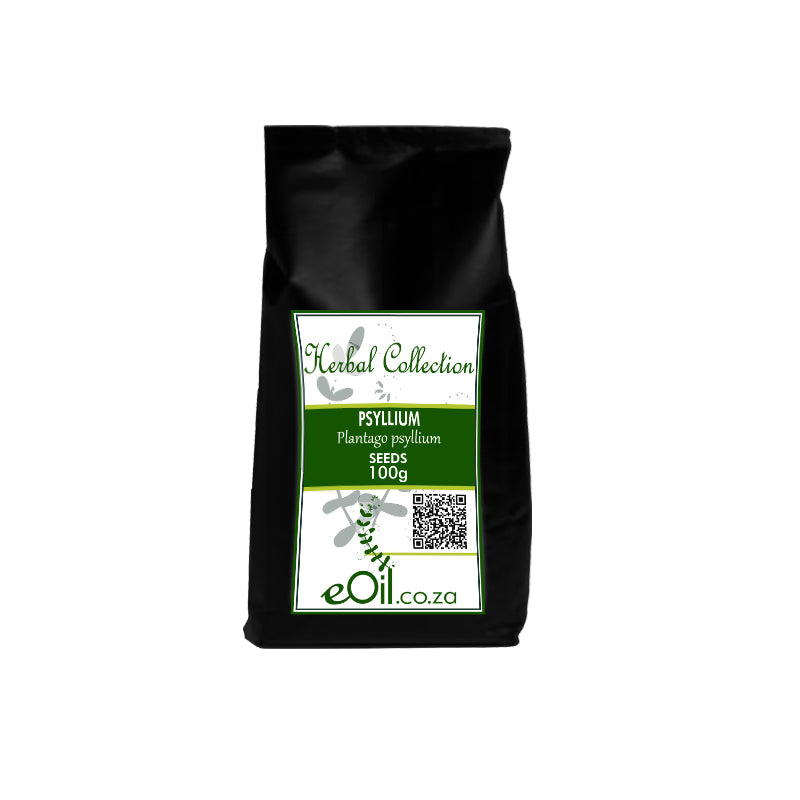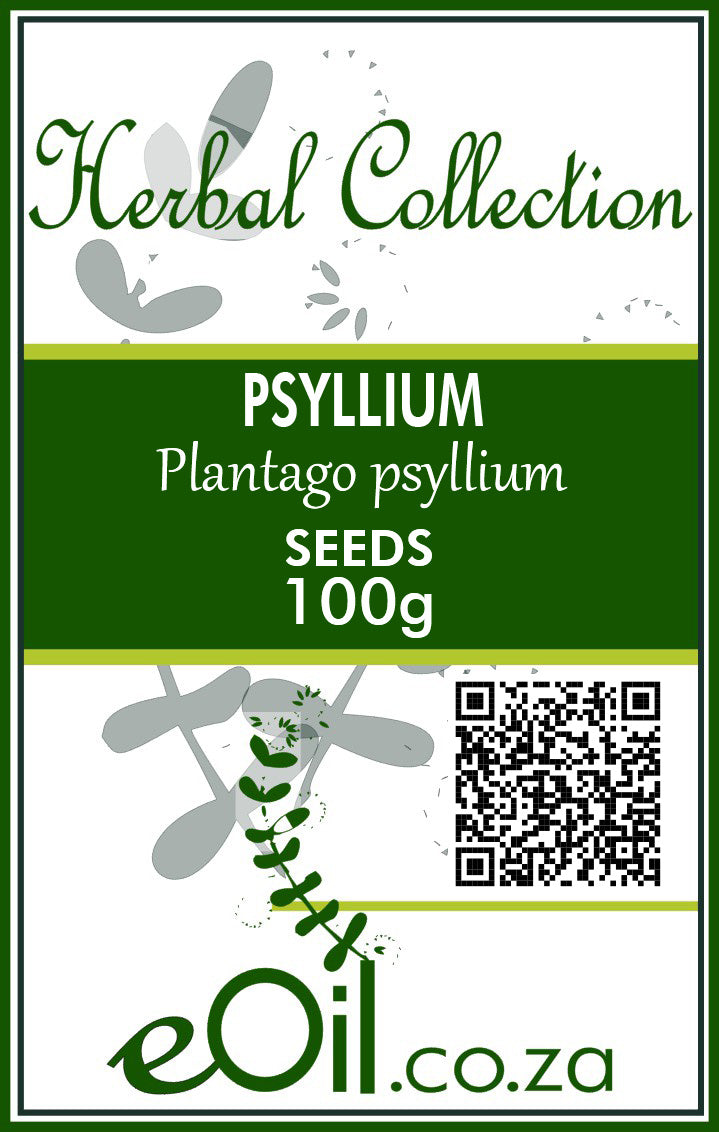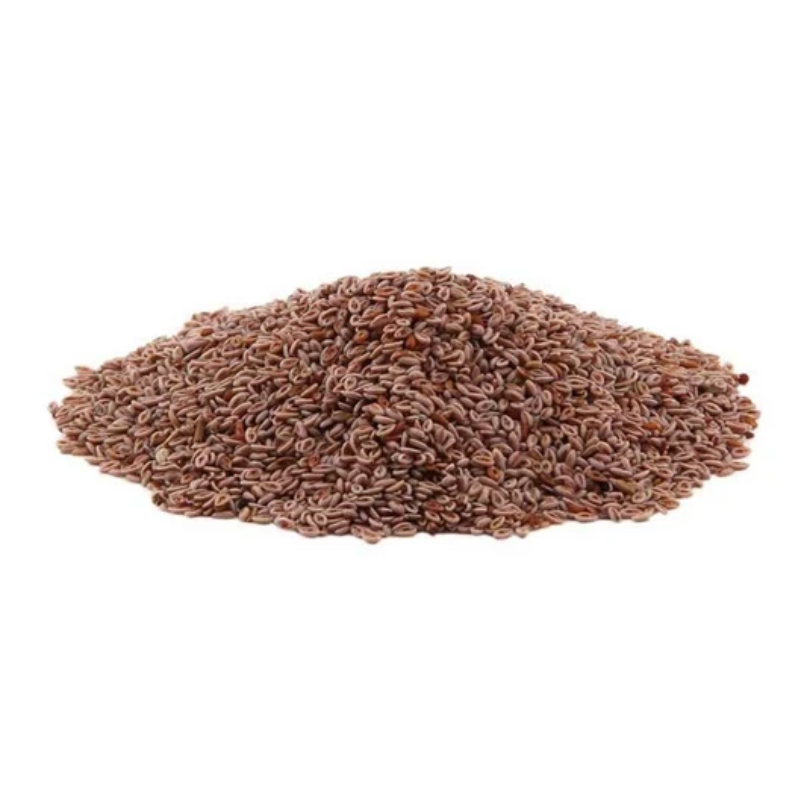Psyllium Seed Dried - Herbal Collection
Psyllium Seed Dried - Herbal Collection - 100 GR is backordered and will ship as soon as it is back in stock.
Description
Description
Herbal Collection Psyllium seed, sourced from the Plantago ovata plant, is a rich natural source of soluble fiber known for its benefits to digestive health.
When combined with water, it creates a gel-like consistency that aids in promoting bowel regularity, alleviating constipation, and supporting a balanced gut microbiome.
Commonly used as a mild bulk-forming laxative, it is also a key ingredient in fiber supplements aimed at enhancing overall digestive function.
TRADITIONALLY USED FOR
Psyllium seed husk is a versatile and beneficial dietary supplement known for its high fiber content and numerous health benefits. In this guide, we'll explore what psyllium seed husk is, its benefits, and how to incorporate it into your daily routine.
Health Benefits of Psyllium Seed Husk
- Diarrhea, Constipation Its exceptional richness in fiber allows it to form a gel that modulates the consistency of stools, thus relieving both diarrhea and constipation.
- Helps regulate cholesterol A study has shown that psyllium effectively improves lipid markers such as LDL cholesterol, once again due to its high fiber content.
- Irritable Bowel Syndrome Psyllium is the only food capable of relieving both diarrhea and constipation, and thus the alternation of the two, which is often the case in irritable bowel syndrome.
- Appetite suppressant effect Almost calorie-free, its satiating effect due to its gelatinous texture promotes satiety and also decreases nutrient absorption.
How to Use Psyllium Seed Husk
Dosage Recommendations
- Start with a low dose of 1/2 to 1 teaspoon (2.5-5 grams) per day
- Gradually increase to 1-2 tablespoons (7-14 grams) per day, divided into 2-3 doses
- Always consult with a healthcare professional for personalized dosage advice
Consumption Methods
- Mix with water:
- Stir 1 teaspoon of psyllium into 8 ounces of water
- Drink immediately before it thickens
Follow with another glass of water
Add to smoothies:
Blend 1 teaspoon into your favorite smoothie recipe
Incorporate into baked goods:
Add to bread, muffin, or pancake recipes for extra fiber
Sprinkle on food:
Add a small amount to yogurt, oatmeal, or salads
Take as capsules:
- Follow the dosage instructions on the product label
Here are the best ways to consume psyllium for optimal results:
Recommended dosage:
- Start with a low dose (1 teaspoon) and gradually increase to 2-3 tablespoons per day, divided into 2-3 servings.
- The effective dose can go up to 30-40g per day according to the European Medicines Agency.
Consumption method:
- Dilute the psyllium in a large glass of water, juice, or any other liquid (at least 240 ml of liquid for 1 teaspoon of psyllium).
- Mix quickly and drink immediately before the gel forms.
- Then drink a second glass of water to properly hydrate the psyllium.
Timing of intake:
- Take psyllium 20-30 minutes before meals for an appetite-suppressing effect.
- Or during/after meals to regulate transit.
- Avoid taking it at bedtime.
Important precautions:
- Drink plenty of water throughout the day (at least 30 ml of water per gram of psyllium).
- Space out the intake of psyllium by at least 2 hours from medications or supplements.
Duration of use:
- You can do courses of several weeks, or even take it daily if necessary.
- Listen to your body and adjust the dose according to your needs and the effects felt.
By following these recommendations, you will maximize the benefits of psyllium while minimizing the risk of side effects. Don't hesitate to consult a healthcare professional for personalized advice.
PSYLLIUM & WEIGHT MANAGEMENT
Psyllium husk, as an appetite suppressant, works through multiple mechanisms:
- Gel Formation: When psyllium husk comes into contact with water, it forms a gel-like substance. This gel increases in volume, taking up space in the stomach and promoting a feeling of fullness. This feeling of fullness signals to the brain that you are satiated, reducing the desire to eat more.
- Delayed Gastric Emptying: The gel formed by psyllium also slows down the rate at which the stomach empties its contents into the small intestine. This delay prolongs the feeling of fullness and prevents rapid spikes in blood sugar, which can contribute to hunger pangs.
- Nutrient Absorption: While psyllium doesn't directly block nutrient absorption, the gel it forms can interfere with the absorption of certain nutrients. This is because the gel can bind to nutrients, slowing down their absorption or carrying them through the digestive system too quickly for complete absorption.
Here's a more detailed breakdown of how psyllium might decrease nutrient absorption:
- Physical Barrier: The gel acts as a physical barrier, potentially trapping some nutrients within its matrix and preventing them from coming into contact with the intestinal lining, where absorption occurs.
- Increased Transit Time: The gel also speeds up the transit time of food through the digestive system. This reduced contact time between nutrients and the intestinal lining can limit the amount of absorption that takes place.
- Binding to Nutrients: Psyllium has been shown to bind to certain nutrients, particularly fats and carbohydrates. This binding can reduce the amount of these nutrients available for absorption.
It's important to note that the effect of psyllium on nutrient absorption is generally considered to be minimal, especially when taken in moderation and with plenty of water. However, individuals with specific nutrient deficiencies or those taking certain medications should consult with a healthcare professional before using psyllium regularly.
Overall, psyllium's appetite suppressant effect is mainly attributed to its ability to create a feeling of fullness and slow down digestion. While it may slightly decrease nutrient absorption, this effect is generally not significant enough to cause concern in healthy individuals.
INFORMATION
Source : http://www.wikiphyto.org/wiki/Psyllium
Reference on http://www.wikiphyto.org
Translation in English by Google Translate (go to the page of the source linked | on Chrome cellphones go on the 3 dots on the top right and select translate in your preferred language | on laptop right click your mouse and select option translate when hoovering on the page
plant name
Psyllium, flea, flea ivy
International Latin denomination
- Plantago afra L. = Plantago psyllium L. (1762) and auct., not Plantago psyllium L. (1753)
- Plantago arenaria Waldst and Kit. = Plantago indica L. = Plantago psyllium L. (1753), name rejected
botanical family
Plantaginaceae
Description and habitat
- Small annual herbs with erect stems, inflorescences with slender or tight spikes
- The fruit is an ovoid, flattened two-seeded capsule
- Blond psyllium or ispaghul ( Plantago ovata ) is native to India and Iran
- Black psyllium ( Plantago afra and Plantago arenaria ) is native to the Mediterranean Basin and the Middle East
History and tradition
Parts used
- Seeds (mucilaginous)
Dosage forms available
Usual dosages
- 1 to 2 teaspoons of seeds, previously macerated cold in water
Composition
Main components of the plant
- Polysaccharides : 10 - 12% mucilage
- 5 - 10% fat (unsaturated fatty acids), protein
- Sterols
- Iridoid ( aucuboside )
- Traces of cyclopentapyridine alkaloids
Main components of buds or young shoots
Main components of essential oil
Properties
Plant properties
- Laxative
- Detoxifying (solubilizes toxins present in the intestine)
- Hypocholesterolemic [1]
- Potential activity in type 2 diabetes [2]
- Swelling index at least equal to 10
Bud properties
Properties of essential oil
Directions
Indications of the whole plant (phytotherapy)
- Occasional constipation, irritable bowel syndrome [3]
- Stomach and duodenal ulcers
- Support for hypolipidemic diets
- Hypercholesterolemia
- Type 2 diabetes
- Metabolic syndrome [4]
Indications of the bud (gemmotherapy)
Specific indications of essential oil (aromatherapy)
Known or suspected mode of action
- "Ballast effect laxative" of purely mechanical mode of action:
- Formation of a viscous gel by the hydrophilicity of polysaccharide macromolecules , increased fecal bolus which stimulates peristalsis and facilitates exoneration
- The mucilages dissolve more or less and swell on contact with water to form gels or colloidal solutions
Usual formulations
- One to two teaspoons to put in a glass, fill the glass with water, let swell, then consume as it is with a spoon or (better) mix with a compote or a soup, to be used by discontinuous cures
Regulations
Possible side effects and precautions for use
- Avoid in case of occlusive syndrome, pyloric stenosis, caution in case of megacolon
Bibliographic references
- Go↑ Olson BH, Anderson SM, Becker MP, Anderson JW, Hunninghake DB, Jenkins DJ, LaRosa JC, Rippe JM, Roberts DC, Stoy DB, Summerbell CD, Truswell AS, Wolever TM, Morris DH, Fulgoni VL. Psyllium-enriched cereals lower blood total cholesterol and LDL cholesterol, but not HDL cholesterol, in hypercholesterolemic adults: results of a meta-analysis. .J Nutr. 1997 Oct;127(10):1973-80. PMID 9311953 , full text: http://jn.nutrition.org/content/127/10/1973.long
- Go↑ Pastors JG, Blaisdell PW, Balm TK, Asplin CM, Pohl SL. Psyllium fiber reduces rise in postprandial glucose and insulin concentrations in patients with non-insulin-dependent diabetes. Am J Clin Nutr. 1991 Jun;53(6):1431-5. PMID 1852093 . http://www.ajcn.org/cgi/reprint/53/6/1431
- Go↑ Singh B. Psyllium as therapeutic and drug delivery agent. Int J Pharm. 2007 Apr 4;334(1-2):1-14. Epub 2007 Jan 21. PMID 17329047
- Go↑ Giacosa A, Rondanelli M. The right fiber for the right disease: an update on the psyllium seed husk and the metabolic syndrome. J Clin Gastroenterol. 2010 Sep;44 Suppl 1:S58-60. PMID 20616745
CAUTION
Store in a cool, dry place, away from light. Keep tightly closed, away from the reach of Children and pets.
Do not exceed the daily dose.
This product is not intended to prevent or cure any form of illness or disease.
If you are pregnant or nursing ; If you have a medical condition or are in the course of medical treatment ; If you are programmed for theater/operation in the near future, please consult your healthcare practitioner before using this product.
This product cannot replace a varied and balanced diet and a healthy lifestyle.
This product has not been evaluated by the SAHPRA for its quality, safety or intended use.
For More Information please check our General Safety Herbal products Page

Psyllium Seed Dried - Herbal Collection - 100 GR is backordered and will ship as soon as it is back in stock.






